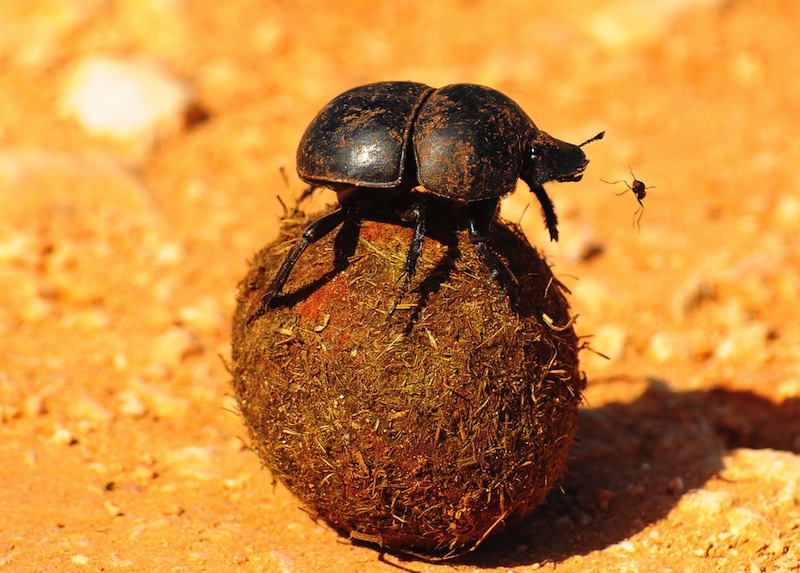Plants Use Clever (but Smelly) Ruse to Spread Seeds

Plants that produce seeds that look and smell like antelope poop are able to trick unsuspecting dung beetles ─ which feed on the droppings ─ into dispersing and burying the seeds, a new study finds.
This finding may be the first time scientists have discovered seeds that successfully use trickery to spread themselves, the researchers said.
There are many examples in nature of flowers that evolved to mimic insects. For instance, a number of orchids imitate female insects to entice visits from males looking for love. These counterfeits then dust these would-be lovers with pollen, which contain plant sperm. When the insects then rendezvous with other flowers, they serve as couriers of this pollen, helping the plants to breed. [See photos of dung beetles dancing on poop balls]
However, until now, there were no convincing examples of seeds that used mimicry to disperse themselves, said study lead author Jeremy Midgley, an evolutionary ecologist at the University of Cape Town in South Africa. Some plants do produce hard red or black seeds that resemble berries, such as the lucky bean tree of South Africa, but these do not seem to fool birds, and are hardly ever eaten or dispersed, he said.
Now, Midgley and his colleagues found nuts in South Africa that resemble antelope droppings.
"Imagine the smell of a sheep or goat dropping — that is what they smell like," Midgley told Live Science. "It's uncanny."
The researchers discovered that this clever ruse gets dung beetles to spread the seeds.
Sign up for the Live Science daily newsletter now
Get the world’s most fascinating discoveries delivered straight to your inbox.
The scientists focused on Ceratocaryum argenteum, which is found in the fire-prone shrub lands on deep sands in South Africa. The nuts of this species are unusual — instead of having smooth, black seed coats like the nuts of the rest of this plant's family, they have rough brown seed coats, the researchers said. Furthermore, these nuts are larger than those of any of related species — they are four-tenths of an inch (1 centimeter) wide, about the size of antelope droppings.
Intriguingly, Ceratocaryum argenteum nuts possess a pungent scent, which is unusual among nuts because it raises the chances of them getting eaten.
"I have nine-month-old seeds in a paper bag in my office that are still very pungent," Midgley said in a statement.
The researchers set up motion-sensing cameras that revealed that rodents either ignored or were even repelled by the nuts. However, when the scientists cracked the nuts open, the rodents found the innards tasty. "We suspect that the smell of the nuts repels small mammals," Midgley said in a statement.
Instead, the scientists found that dung beetles rolled the nuts away and buried them. Dung beetles feast on dung, and lay their eggs in dung for their young to eat. The round shape of these nuts makes it easier for the dung beetles to roll them, the scientists said.
The researchers analyzed the chemicals the seeds give off and found their concentration and composition are similar to those released by the dung of antelopes, such as elands and bonteboks. However, although the nuts smell like dung, neither the dung beetles nor their young can eat the hard seeds — a classic example of biological deception.
"This is probably the best example of deception as regards to seed dispersal," Midgley said.
The researchers suggested this kind of dispersal is rare because it depends on the right proportion of animal dung and dung beetles. "Too much dung and the nuts will not be buried because beetles have too much of a choice; too little dung and there will be a similar lack of burial owing to too few dung beetles," Midgley said.
The scientists now want to see which of the chemicals on the nuts attract dung beetles "and whether any of the chemicals repel the small mammals," Midgley said.
The scientists detailed their findings online today (Oct. 5) in the journal Nature Plants.
Follow Live Science @livescience, Facebook & Google+. Original article on Live Science.










